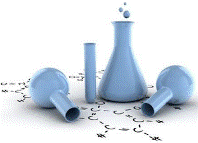Chemical and Biomolecular Engineering, Department of
Date of this Version
2020
Document Type
Article
Citation
Islam MM, Le T, Daggumati SR, Saha R. 2020. Investigation of microbial community interactions between Lake Washington methanotrophs using genome-scale metabolic modeling. PeerJ 8:e9464 http://doi.org/10.7717/peerj.9464
Abstract
Background. The role of methane in global warming has become paramount to the environment and the human society, especially in the past few decades. Methane cycling microbial communities play an important role in the global methane cycle, which is why the characterization of these communities is critical to understand and manipulate their behavior. Methanotrophs are a major player in these communities and are able to oxidize methane as their primary carbon source.
Results. Lake Washington is a freshwater lake characterized by a methane-oxygen countergradient that contains a methane cycling microbial community. Methanotrophs are a major part of this community involved in assimilating methane from lake water. Two significant methanotrophic species in this community are Methylobacter and Methylomonas. In this work, these methanotrophs are computationally studied via developing highly curated genome-scale metabolic models. Each model was then integrated to form a community model with a multi-level optimization framework. The competitive and mutualistic metabolic interactions among Methylobacter and Methylomonas were also characterized. The community model was next tested under carbon, oxygen, and nitrogen limited conditions in addition to a nutrient-rich condition to observe the systematic shifts in the internal metabolic pathways and extracellular metabolite exchanges. Each condition showed variations in the methane oxidation pathway, pyruvate metabolism, and the TCA cycle as well as the excretion of formaldehyde and carbon di-oxide in the community. Finally, the community model was simulated under fixed ratios of these two members to reflect the opposing behavior in the two-member synthetic community and in sediment-incubated communities. The community simulations predicted a noticeable switch in intracellular carbon metabolism and formaldehyde transfer between community members in sediment- incubated vs. synthetic condition.
Conclusion. In this work, we attempted to predict the response of a simplified methane cycling microbial community from Lake Washington to varying environments and also provide an insight into the difference of dynamics in sediment-incubated microcosm community and synthetic co-cultures. Overall, this study lays the ground for in silico systems-level studies of freshwater lake ecosystems, which can drive future efforts of understanding, engineering, and modifying these communities for dealing with global warming issues.



Comments
2020 Islam et al.